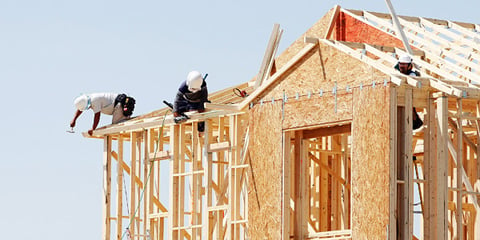Housing Starts Rise in June But It Doesn’t Mean Much, Say Analysts
by Mike Wheatley - 20 July 2011
The number of new homes going up saw a significant increase over the last month, but taking that as a sign that the real estate industry is moving into recovery is probably still jumping the gun just a little, say experts.

Increase in new home starts last June is nothing more than a blip say analysts. Image courtesy of Business Week
The fact is, new home construction remains at its lowest level in years, and the demand for new properties remains severely impacted by the huge number of foreclosures that have swamped real estate markets. Add this to the fact that new homes generally cost around 30% more than that of a used home, together with a general uncertainty over the direction the economy is going to take and the difficulty in obtaining credit and you can see why there is still a long way to go.
So that makes it rather surprising that the number of new homes just started last month would increase so significantly, as much as 14.6% above the number in May, and 16.7% above June 2010. However, analysts quickly put it down to nothing more than a seasonal blip.
“We might be seeing more housing starts than we expected, but we do not think it is suggestive of a true housing market recovery,” said FTN Financial’s Lindsey Piegza in an interview with the Reuters news agency.
“Right now, we are still wallowing at the bottom, and all we are seeing is a little volatility now and again,” she added.

Multifamily home starts saw the biggest increase by far, jumping 30% in June. Image courtesy of Foreclosure Deals
The biggest reason for last month’s new starts boost was multifamily homes, which saw a jump of 30% in the number of starts. Single family homes also increased by 9.4%, the biggest such jump since November 2010.
Overall, it was the Northeast that saw the most new starts, with new builds here increasing by 35.1%, followed by the Midwest which saw an increase of 25.3%. In the south meanwhile, the increase was fairly strong at 10.6%.
However, though these numbers sound promising, Jennifer Lee, an economist with BMO Capital Markets, said that the jump was “nothing more than a slight blip in a flat-lining trend,” and “nothing to get excited about.”
“In order to see a real recovery take place, we’re going to need a lot more jobs to be created,” she explained.


